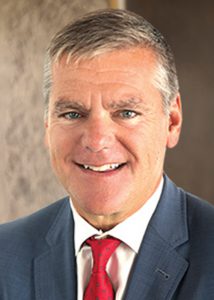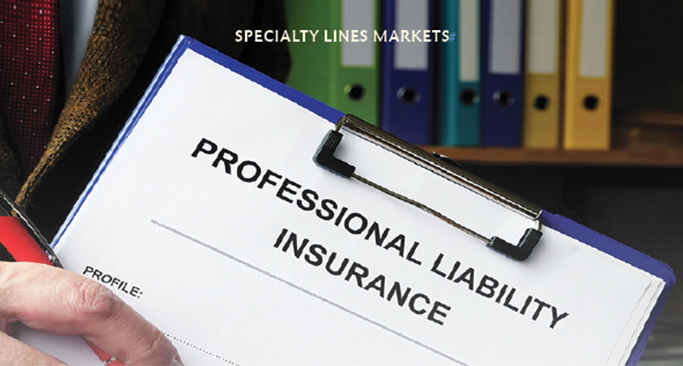Professional Liability Insurance
Claims severity takes a toll, but capacity remains
By Joseph S. Harrington, CPCU
The global economy is establishing a new equilibrium after the disruption of supply chains and labor markets by the COVID-19 pandemic.
The market for professional liability insurance appears to be following a similar path. Prices are higher and supply is somewhat constrained, but capacity is substantial enough to allow for renewed growth.
“We see rate increases across the errors and omissions (E&O) market, but the increases vary by class of business,” says Jim Mormile, senior vice president for professional liability for Skyward Specialty Insurance.
“As larger carriers reduce capacity, agents and brokers are increasingly challenged to find replacement cover-age at similar pricing,” he says. “With rates increasing, producers are beginning to negotiate term reductions for a smaller increase in premiums. We’ve also seen how economic uncertainty has led clients to be more mindful of spending. As a result, some firms are reducing insurance expenditures as a cost-cutting measure.”
Darren Black, national practice leader at Risk Strategies, reports a “minor uptick” in claim frequency for legal, accounting, and design professionals, along with a significant increase in severity. In response, carriers have increased rates and reduced limits, according to Black, but the professional liability insurance market remains competitive enough that there have not been significant limitations on the breadth of coverage.

“As larger carriers reduce capacity, agent and brokers are increasingly challenged to find replacement coverage at similar pricing. With rates increasing, producers are beginning to negotiate term reductions for a smaller increase in premiums.”
—Jim Mormile
Senior Vice President, Professional Liability
Skyward Specialty Insurance
Insurers in other lines may experience some schadenfreude over stresses experienced by carriers that write legal malpractice coverage, as described in a recent survey report by Ames & Gough a brokerage specializing in professional liability insurance.
“Even though the frequency of legal malpractice claims remains relatively flat, claim severity continues to spike,” the report says. “Among other factors, elevated claim costs have been driven by an increase in legal defense costs due to court delays arising from the impact of COVID-19, aggressive tactics deployed by plaintiffs’ counsel, and the overall increasing complexity of cases. As a result, some firms now rush to settle large claims—often before litigation is filed—to avoid escalating costs.”
Sound familiar? Even with those strains, however, Ames & Gough found that seven of the 11 carriers it surveyed planned to increase rates less than 5%, if at all; three others projected rate hikes of 10% or less, and only one predicted increasing rates more than 10%.
Dispute dynamics
“The basis of claims hasn’t changed so much as the dynamics of dispute resolution,” Black says. “Those dynamics include social and economic inflation, third-party litigation funding, and case backlogs and virtual court proceedings arising from the pandemic.
“‘Consent to settle’ provisions remain the rule,” Black adds, “but insurers seem to be pressuring insureds and defense counsel to consider settlement offers based largely on projected defense costs, even in cases that appear to be without merit.”
“These factors impact rates and the amount of capacity that any one market is willing to expose,” he notes. “Insurers that used to be willing to write a $10 million to $20 million primary layer are now only willing to put up half that amount, dramatically increasing the number of firms utilizing excess layers and/or quota share arrangements to obtain the desired limits of coverage.”
The intensifying “dynamics of dispute resolution” cited by Black are the result of “a significant societal shift” says Anita Rogers, senior vice president of claims for Skyward Insurance.
“Society’s increasing distrust or skepticism of science, experts, and corporations is impacting not only the details of a claim, but also is opening the door for the company’s business practices being judged as part of the dispute,” she says.
As a result, Rogers adds, “there is an increased focus on corporate governance policies and standards, which spills over into the courtroom. Juries increasingly want to hold corporations accountable in more extreme ways, which often results in outsized jury verdicts.
“So now, when we prepare for trial, we strive to tell a story that shows the insured as defensible both in its handling of the claims and in its moral fabric as a corporation.”
“Silent cyber”
As their clients wrestle with growing skepticism and scrutiny, insurers are striving to ensure that exposure for professional liability is not extend-ed to cyber losses caused or incurred by professional acts or omissions.

“Professional services firms have always wanted more from their risk advisors and partners than an insurance policy. The greatest opportunities … will come from being perceived as a resource that gives clients the ability to … recognize and mitigate risk.”
—Darren Black
National Practice Leader
Risk Strategies
For several years, the insurance industry has sought to exclude “silent cyber” coverage from professional and management liability policies, preferring to concentrate all coverage for cyber losses into cyber policies designed to cover such losses. It’s not clear, however, that professional liability insurers can avoid exposure to cyber operations that are an integral part of the services provided by their insureds.
In its report on legal malpractice insurance, Ames & Gough notes that “in most instances, lawyers’ professional liability insurers have not expressly stated [whether] their policy excludes cyber-related exposure.”
In light of that, Ames & Gough advises law firms to clarify whether their legal malpractice insurance responds to cyber-related claims, and whether their professional or cyber policy responds first to such a claim. According to Ames & Gough, some cyber policies state that they are excess over other available insurance, thus potentially drawing down professional liability policy limits for mostly cyber claims.
“Silent cyber is still a relatively new topic in legal circles,” says Rogers. “There isn’t a lot of case law to shed light on what makes for a good cyber exclusion that courts will uphold.
“Initial approaches to cyber insurance underestimated the exposures,” she says. “As cyber losses climb to astronomical numbers, courts are grappling with what to do when there isn’t enough cyber coverage in place. As a result, they’re asking general liability and professional liability policies to respond to cyber losses.”
That fact should not deter professionals from acquiring separate cyber liability coverage, according to Black.

“Society’s increasing distrust or skepticism of science, experts, and corporations is impacting not only the details of a claim, but also opening the door for the company’s business practices being judged as part of the dispute.”
—Anita Rogers
Senior Vice President, Claims
Skyward Specialty Insurance
Foresee and prevent
“Stand-alone cyber coverage has always been more robust than the ancillary coverage grants within professional liability policies,” Black says, “particularly with respect to first-party coverage. But the belief that they had some cyber coverage within their professional liability policies dissuaded many firms from buying the separate cover.”
Black explains that technology and software enhance not only what professionals can do but what they can foresee and prevent.
“This impacts firms’ liability for claims arising from, say, traffic accidents attributable to highway design, or to a building’s ability to withstand severe weather,” he says. “For law firms, some of the most severity-prone cases involve allegations of conflict of interest, for which software has long existed to detect and avoid. In accounting, if something is missed in an audit, it could be argued that better systems might have reveal-ed and disclosed it.”
It may surprise some readers that, in Black’s observation, “the most sophisticated professional liability underwriters focus more on firms’ centralized management protocols and systems—client-in-take, contracts or engagement letters, peer review, education, and utilization of technology—than a firm’s participation in so-called ‘risky’ practice areas or project types.”
Opportunities
As always, where there are challenges, there are opportunities for professionals and their insurance providers to create new value.
“For us, current challenges in the professional liability market have opened doors for strategic expansions in certain areas,” says Mormile. “In an evolving market, the true differentiator is a bench of top-tier talent empowered to make decisions at the point of sale to assess and price appropriately on the spot,” he says.
“Professional services firms have always wanted more from their risk advisors and partners than an insurance policy,” says Black. “The greatest opportunities for agents, brokers, and insurers will come from being perceived as a resource that gives clients the ability to see around the corners to recognize and mitigate risk.”
For more information:
Ames & Gough
www.amesgough.com
Risk Strategies
www.risk-strategies.com
Skyward Specialty Insurance
www.skywardinsurance.com
The author
Joseph S. Harrington, CPCU, is an independent business writer specializing in property and casualty insurance coverages and operations. For 21 years, Joe was the communications director for the American Association of Insurance Services (AAIS), a P-C advisory organization. Prior to that, Joe worked in journalism and as a reporter and editor in financial services.





